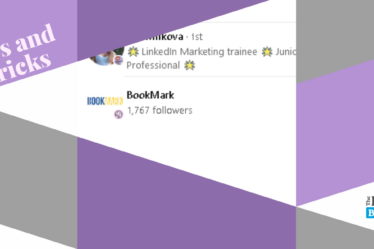
Success in today’s dynamic world depends on maintaining an advantage over rivals. A comprehensive competitor study on LinkedIn is one way to get an advantage. This is a crucial step for companies looking to improve their brand visibility and marketing tactics on the network. However, where do you even start?
Let’s start by defining what a LinkedIn competitive analysis is. This is a calculated approach in which you carefully examine and contrast your LinkedIn performance with that of your rivals. Analyzing their tactics, advertising, goods, advantages, and disadvantages in comparison to your products is part of this. It’s critical to identify your competitors since they are companies that provide comparable goods or services or cater to the same clientele.
But how can you make a competitor analysis? We provide 4 easy-to-follow steps that can help you leverage your LinkedIn game to the next level while analyzing your competitors.
- Establish a clear purpose for your research
To kickstart your analysis journey, you first need to establish a clear purpose for your research. Define the insights you seek and outline your expectations. Whether it’s unraveling posting patterns, decoding marketing strategies, or tapping into the latest industry trends, clarity of purpose sets the stage for a fruitful analysis.
- Data Gathering
Next comes the data gathering phase. Manually collect LinkedIn metrics from your competitors’ pages or leverage the platform’s analytics section for insights into follower demographics and engagement levels.
Go to the analytics section of the native app to obtain LinkedIn stats regarding the number of followers and interaction of your competitors.
You will see yourself there among your rivals under the Competitors page, and you will be able to quickly identify any significant variations in terms of followers:
4) Ad performance
Finally, but just as importantly, analyze the purchased advertisements of your rivals to find any interesting tactics or patterns. Keep a close eye on ad performance indicators to compare the performance of sponsored content with that of organic postings.
You can identify your emphasis by looking at the sponsored material of your rivals. You may boost engagement rates by tailoring your adverts to the interests of your target audience. Check to see whether more people see their sponsored posts than their original material. Depending on your findings, your LinkedIn strategy might need to be adjusted.
You may wonder why all of this work is worthwhile. There are many advantages to conducting a thorough competitor study on LinkedIn. It offers priceless insights on how you perform in comparison to rivals, reveals new trends in content creation, and expands your comprehension of audience preferences. You can obtain a competitive advantage and modify your strategy to more effectively connect with your target audience by studying the techniques of your rivals.
It’s critical to stay up to date on industry trends and rival initiatives in today’s changing digital market. Businesses may improve their marketing strategies, seize new possibilities, and keep a competitive edge in the dynamic world of professional networking by regularly doing competition studies on LinkedIn.
The Linked Blog is here to help you or your brand have the best possible LinkedIn presence, so feel free to contact us if you need help! See more about what we can do for you here.



